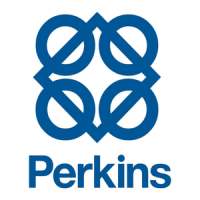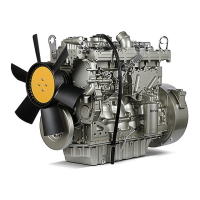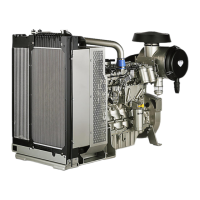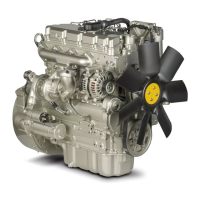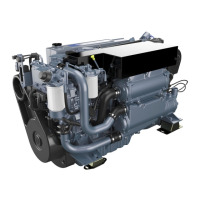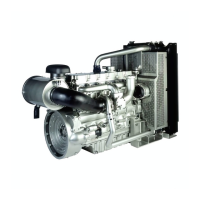Do you have a question about the Perkins 1103AA-33G and is the answer not in the manual?
Warnings about cancer, birth defects, and reproductive harm from diesel exhaust and chemicals.
Guidance on reading, storing, and using the manual and engine literature.
Introduction to the Safety Section, highlighting precautions and hazard identification.
Introduction to the Operation Section, covering basic techniques and procedures.
Introduction to the Maintenance Section, guiding engine care and service intervals.
Explains warning signs, their meaning, and the importance of legible and correct warning labels.
Covers universal warning labels, hazard identification, and general safety precautions.
Details risks of pressurized air/water, fluid penetration, and containing spills.
Discusses static electricity, inhalation, asbestos, and hexavalent chromium hazards.
Warns about hot parts, gases, and system pressure relief.
Precautions against fire and explosion from flammable materials and electrical sources.
Addresses crushing, cutting, mounting, starting, and stopping safety procedures.
Safety measures for electrical systems, battery handling, and grounding.
Introduces diagrams showing engine features and components.
Describes engine types and lists key technical specifications like bore, stroke, and displacement.
Explains the engine's cooling and lubrication systems and their components.
Details on identifying engines using serial numbers and list numbers for parts.
A section for recording engine details like model, serial number, and capacities.
Safe procedures for lifting engines using eyebolts and appropriate lifting equipment.
Guidelines for storing engines to prevent damage, including conditions and procedures.
Explains the function of various engine gauges and indicators for monitoring performance.
Detailed steps and precautions for safely starting the engine.
Procedures and tips for starting the engine in cold temperatures, including glow plug use.
Procedures for warming up the engine and checking for leaks after starting.
Guidance on proper engine operation, warm-up, and fuel conservation practices.
Procedures for safely stopping the engine and emergency shutdown protocols.
Factors affecting diesel engine operation in cold weather and recommended practices.
Lists oil and coolant capacities for different engine models and systems.
Guidelines for selecting and using engine coolants, oils, and fuels.
Comprehensive schedule of maintenance tasks based on service hours or time intervals.
Procedures for changing and checking coolant levels for commercial and ELC systems.
Steps for checking oil level, sampling, and changing oil and filter.
Procedures for replacing and draining fuel filters and water separators.
Pre-operation inspection checklist covering leaks, connections, and overall engine condition.
General information about warranty coverage and terms.
Specific details regarding emissions warranty coverage and compliance.
Fields for recording specific product identification details.
Fields for recording dealer contact and service information.
Warnings about cancer, birth defects, and reproductive harm from diesel exhaust and chemicals.
Guidance on reading, storing, and using the manual and engine literature.
Introduction to the Safety Section, highlighting precautions and hazard identification.
Introduction to the Operation Section, covering basic techniques and procedures.
Introduction to the Maintenance Section, guiding engine care and service intervals.
Explains warning signs, their meaning, and the importance of legible and correct warning labels.
Covers universal warning labels, hazard identification, and general safety precautions.
Details risks of pressurized air/water, fluid penetration, and containing spills.
Discusses static electricity, inhalation, asbestos, and hexavalent chromium hazards.
Warns about hot parts, gases, and system pressure relief.
Precautions against fire and explosion from flammable materials and electrical sources.
Addresses crushing, cutting, mounting, starting, and stopping safety procedures.
Safety measures for electrical systems, battery handling, and grounding.
Introduces diagrams showing engine features and components.
Describes engine types and lists key technical specifications like bore, stroke, and displacement.
Explains the engine's cooling and lubrication systems and their components.
Details on identifying engines using serial numbers and list numbers for parts.
A section for recording engine details like model, serial number, and capacities.
Safe procedures for lifting engines using eyebolts and appropriate lifting equipment.
Guidelines for storing engines to prevent damage, including conditions and procedures.
Explains the function of various engine gauges and indicators for monitoring performance.
Detailed steps and precautions for safely starting the engine.
Procedures and tips for starting the engine in cold temperatures, including glow plug use.
Procedures for warming up the engine and checking for leaks after starting.
Guidance on proper engine operation, warm-up, and fuel conservation practices.
Procedures for safely stopping the engine and emergency shutdown protocols.
Factors affecting diesel engine operation in cold weather and recommended practices.
Lists oil and coolant capacities for different engine models and systems.
Guidelines for selecting and using engine coolants, oils, and fuels.
Comprehensive schedule of maintenance tasks based on service hours or time intervals.
Procedures for changing and checking coolant levels for commercial and ELC systems.
Steps for checking oil level, sampling, and changing oil and filter.
Procedures for replacing and draining fuel filters and water separators.
Pre-operation inspection checklist covering leaks, connections, and overall engine condition.
General information about warranty coverage and terms.
Specific details regarding emissions warranty coverage and compliance.
Fields for recording specific product identification details.
Fields for recording dealer contact and service information.
| Engine Model | 1103AA-33G |
|---|---|
| Engine Type | Diesel |
| Number of Cylinders | 3 |
| Aspiration | Naturally Aspirated |
| Cooling System | Water-cooled |
| Bore | 105 mm |
| Stroke | 127 mm |

